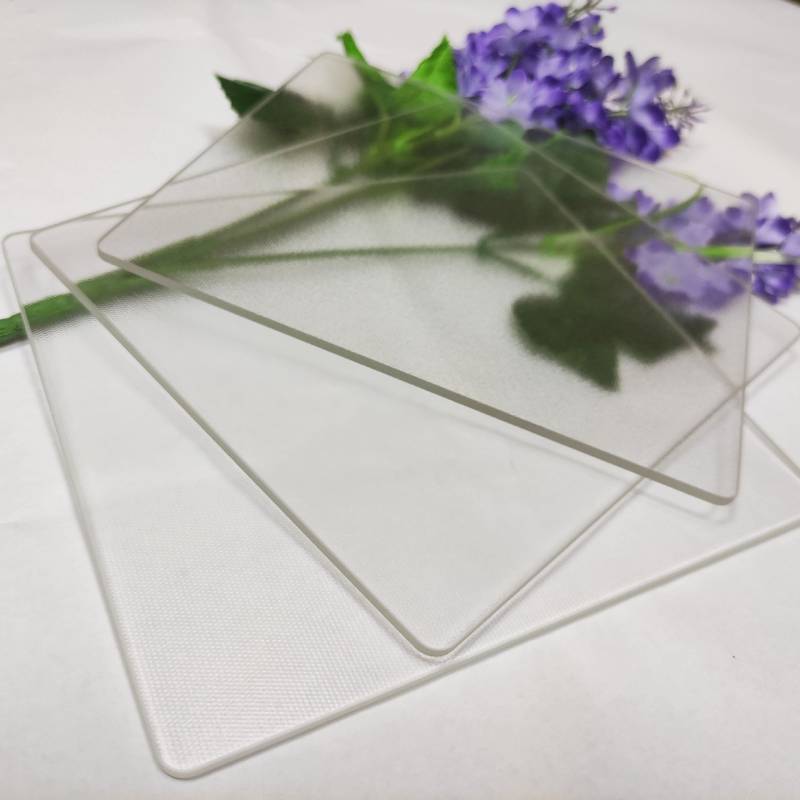The Emergence and Applications of Transparent Float Glass
Transparent float glass, a staple material in both construction and art, has revolutionized the way we perceive and interact with our environments. Its unique properties—clarity, uniform thickness, and smooth surface—make it an ideal choice for a vast range of applications, from architectural facades to decorative art pieces.
The manufacturing process of float glass is both fascinating and complex. First developed in the 1950s, the technique involves melting raw materials such as silica sand, soda ash, and limestone at high temperatures. The molten glass is then poured onto a bed of molten tin, which allows the glass to spread out evenly and float, creating a smooth surface. This unique process ensures that the glass is not only transparent but also free of impurities and imperfections, making it a reliable choice for consumers.
One of the most prominent applications of transparent float glass is in the construction industry. It is frequently used in the design of windows, facades, and doors due to its excellent light transmission properties. Buildings that utilize float glass can achieve a modern aesthetic while maximizing natural light, reducing the need for artificial lighting, and, consequently, lowering energy costs. Moreover, advancements in coating technologies have led to the development of energy-efficient glass options, such as low-emissivity (low-E) glass, which reflects heat while allowing light to pass through. This has made it indispensable in both residential and commercial construction, promoting sustainability and energy conservation.
transparent float glass
In addition to its use in architecture, transparent float glass has found its place in the world of art and design. Artists and designers appreciate its versatility and ability to create visually striking installations. From glass sculptures to elaborate window designs, float glass allows for innovative interpretations of shape and light. It can be etched, laminated, or colored, enabling artists to push the boundaries of traditional mediums. High-profile art installations around the world often utilize float glass to capture and manipulate light, creating an immersive experience for viewers.
The automotive industry has also embraced transparent float glass, using it in the production of windshields and windows. Here, the glass is tempered or laminated to ensure safety and durability, meeting strict regulatory standards. The clarity and transparency of float glass enhance visibility for drivers while also contributing to the overall aesthetic of modern vehicles.
In the realm of domestic use, transparent float glass is commonly found in furniture, mirrors, and other household items. Its sleek appearance and strength make it an excellent choice for tabletops, shelving, and decorative features, merging practicality with elegance. The ongoing trend towards open and airy living spaces has further boosted the popularity of glass in interior design.
In conclusion, transparent float glass is an extraordinary material that has shaped various industries and artistic expressions. Its unique properties, combined with advances in technology, continue to inspire innovation and creativity. As we move towards a future that prioritizes sustainability and aesthetic value, the significance of transparent float glass in our everyday lives is only set to grow. Whether illuminating a workspace or enhancing the beauty of public installations, its versatility is unmatched, making it a true marvel of modern engineering and design.
 Afrikaans
Afrikaans  Albanian
Albanian  Amharic
Amharic  Arabic
Arabic  Armenian
Armenian  Azerbaijani
Azerbaijani  Basque
Basque  Belarusian
Belarusian  Bengali
Bengali  Bosnian
Bosnian  Bulgarian
Bulgarian  Catalan
Catalan  Cebuano
Cebuano  Corsican
Corsican  Croatian
Croatian  Czech
Czech  Danish
Danish  Dutch
Dutch  English
English  Esperanto
Esperanto  Estonian
Estonian  Finnish
Finnish  French
French  Frisian
Frisian  Galician
Galician  Georgian
Georgian  German
German  Greek
Greek  Gujarati
Gujarati  Haitian Creole
Haitian Creole  hausa
hausa  hawaiian
hawaiian  Hebrew
Hebrew  Hindi
Hindi  Miao
Miao  Hungarian
Hungarian  Icelandic
Icelandic  igbo
igbo  Indonesian
Indonesian  irish
irish  Italian
Italian  Japanese
Japanese  Javanese
Javanese  Kannada
Kannada  kazakh
kazakh  Khmer
Khmer  Rwandese
Rwandese  Korean
Korean  Kurdish
Kurdish  Kyrgyz
Kyrgyz  Lao
Lao  Latin
Latin  Latvian
Latvian  Lithuanian
Lithuanian  Luxembourgish
Luxembourgish  Macedonian
Macedonian  Malgashi
Malgashi  Malay
Malay  Malayalam
Malayalam  Maltese
Maltese  Maori
Maori  Marathi
Marathi  Mongolian
Mongolian  Myanmar
Myanmar  Nepali
Nepali  Norwegian
Norwegian  Norwegian
Norwegian  Occitan
Occitan  Pashto
Pashto  Persian
Persian  Polish
Polish  Portuguese
Portuguese  Punjabi
Punjabi  Romanian
Romanian  Russian
Russian  Samoan
Samoan  Scottish Gaelic
Scottish Gaelic  Serbian
Serbian  Sesotho
Sesotho  Shona
Shona  Sindhi
Sindhi  Sinhala
Sinhala  Slovak
Slovak  Slovenian
Slovenian  Somali
Somali  Spanish
Spanish  Sundanese
Sundanese  Swahili
Swahili  Swedish
Swedish  Tagalog
Tagalog  Tajik
Tajik  Tamil
Tamil  Tatar
Tatar  Telugu
Telugu  Thai
Thai  Turkish
Turkish  Turkmen
Turkmen  Ukrainian
Ukrainian  Urdu
Urdu  Uighur
Uighur  Uzbek
Uzbek  Vietnamese
Vietnamese  Welsh
Welsh  Bantu
Bantu  Yiddish
Yiddish  Yoruba
Yoruba  Zulu
Zulu 

